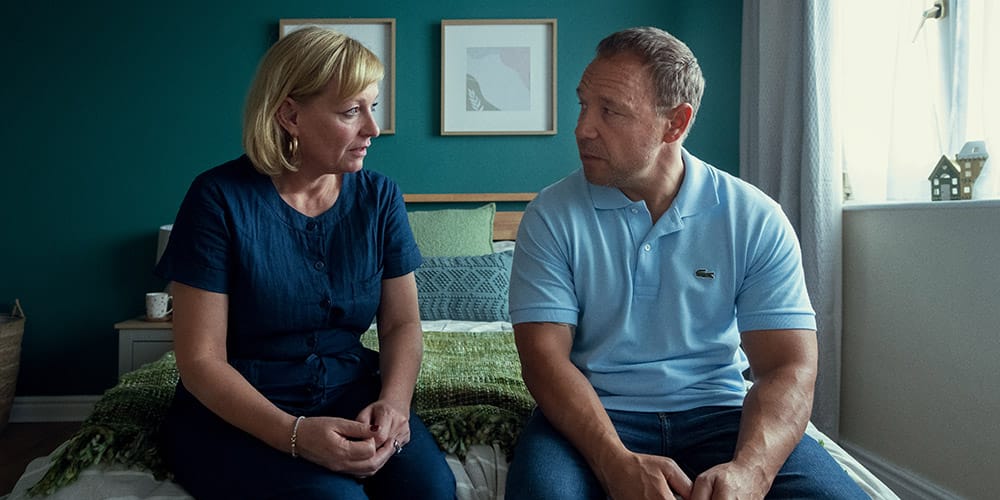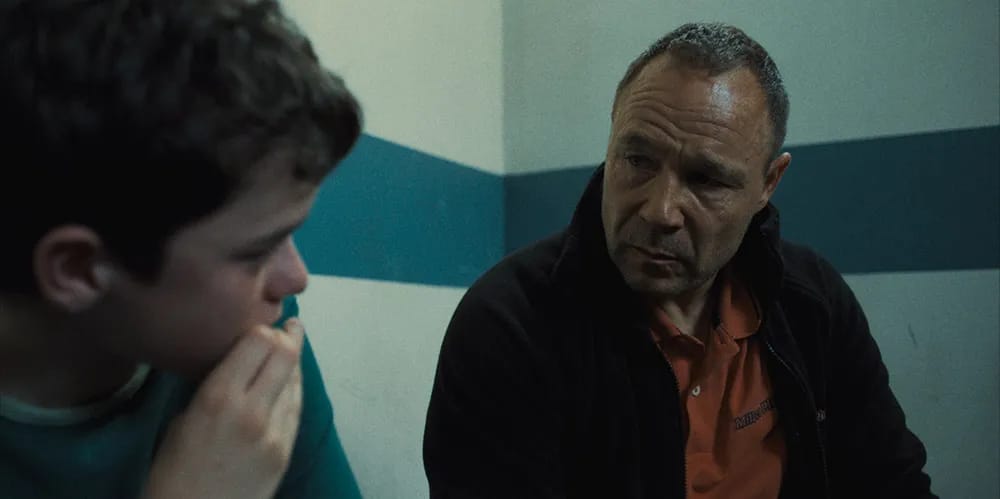The premise is stark: a quiet Yorkshire morning is shattered when police storm the Miller family’s home and arrest young Jamie for the stabbing death of a schoolmate. In the following episodes, Adolescence unfolds not as a typical whodunit (Jamie’s guilt becomes evident early on) but as a whydunit – an unflinching exploration of why a seemingly ordinary boy could commit such a violent act. Viewers and Jamie’s anguished parents and determined investigators yearn for a satisfying answer. Was it bad parenting? Online influences? Bullying at school? A genetic predisposition to violence? The series pointedly denies any simplistic answer, forcing us to confront an unsettling truth: human behavior, especially in adolescents, rarely boils down to a single cause.
The Temptation of a Simple Explanation
It’s human nature to seek a clear cause-and-effect when tragedy strikes. Early on, the police detectives methodically sift through potential motives – scouring Jamie’s social media for clues of radicalization or harassment, interviewing classmates about conflicts and insults. Jamie’s parents, Eddie and Manda, also spiral through self-recrimination and doubt, replaying their family history for where they “went wrong.” This impulse is familiar in the real world: when a teenager commits a terrible act, the public and media often scramble to pin blame on one factor, be it violent video games, negligent parents, bullying, or peer pressure. Adolescence pointedly shines a light on this tendency and then subverts it at every turn.
Detectives Luke Bascombe and Misha Frank find pieces of a puzzle – misogynistic internet forums Jamie frequented, a close friend who supplied the knife, classmates who derided him as an “incel,” and the memory of a humiliating rejection by the girl who became his victim. Yet, as Detective Sergeant Frank soberly acknowledges, no matter how much evidence they compile, “we cannot know why, and we will not know why.” In other words, even with a motive map laid out, the exact alchemy that produced this outcome remains elusive. The show suggests that seeking one definitive reason is not only futile but misleading. Jamie’s story isn’t a straight line from a single cause to effect; it’s a tangle of influences that defies a tidy conclusion.

Jamie’s court-appointed psychologist, Dr. Briony, attempts to get through to him in a secure youth facility. Their tense, one-on-one session (filmed as a continuous 60-minute shot) is the emotional crux of the series, exposing Jamie’s mix of adolescent vulnerability and violent ideation
A Father’s Reflection: Breaking the Cycle and Questioning Himself
One of the most poignant threads in Adolescence is Eddie’s struggle to understand his son’s violence in light of his own upbringing. Eddie (played by Stephen Graham) is a devoted father who grew up with an abusive dad. In a quiet, heart-wrenching scene, Eddie confides that as a boy, “my dad used to batter me… I promised myself when I had my own kids, I’d never do that.” He has spent Jamie’s whole life determined to be the opposite of his father – loving where his father was cruel, gentle where his father was brutal. By all accounts, Eddie succeeded in breaking that cycle of physical abuse: Jamie and his sister Lisa were raised in a caring home, never subjected to the violence Eddie endured.
Yet here Eddie sits, grappling with the unthinkable reality that his child took a life. This paradox tortures him. “I just wanted to be better,” Eddie whispers through tears. “But am I? Am I better?” Despite doing everything he could to protect and nurture his son, Eddie wonders if he failed in some invisible way. He even briefly loses his temper in despair – in one scene, after teenagers vandalize his property out of spite toward his family, Eddie erupts in anger, a frightening echo of the rage he swore off. Adolescence uses Eddie’s turmoil to illustrate a key point: even good parenting doesn’t come with guaranteed outcomes. A child is not a programmed product of parental input. Eddie’s gentle nature and rejection of his father’s brutality undoubtedly gave Jamie a healthier start in life, but they did not immunize Jamie against other forces. Eddie’s reflection underscores how generational trauma and family history are just one part of a much larger puzzle. He did not pass on the abuse he suffered – proving that cycle can be broken – yet his son still encountered violence elsewhere. The series pointedly avoids painting Eddie as “the reason” for what happened. Instead, it shows a loving father wrestling with guilt he doesn’t deserve, exemplifying the futility of pinning blame solely on parenting.
A Mother’s Anguish: “We Made Him” and the Weight of Guilt
If Eddie questions his influence as a father, Jamie’s mother Manda (Christine Tremarco) gives voice to an equally heartbreaking fear: that as parents, “we made him.” In a climactic exchange, Manda sits with Eddie in their son’s empty bedroom, tears in her eyes, and states those three words heavy with despair. “We made him.” In that moment, Manda is expressing every parent’s nightmare—that her child’s unspeakable behavior must somehow be a reflection of her and Eddie. They created Jamie, after all; he is their flesh and blood. Does his capacity for cruelty mean there is something rotten in his DNA, or in the way they raised him?
Immediately, Eddie responds, “Don’t say that,” insisting that they can’t blame themselves for Jamie’s choices. Intellectually, he’s right—no mother or father can fully control who their child becomes. But Manda’s lament isn’t about logic; it’s about the visceral guilt and grief of a mother who feels an incomprehensible tragedy as an extension of herself. The series lets us sit with Manda’s pain. She recalls how they tried to do everything right as parents. There was no abuse in the household, no severe neglect or dysfunction that might explain turning a child violent. Manda’s heartbreak lies in the realization that despite providing love and support, their son still became a killer. It’s a shattering idea: we did our best, and it wasn’t enough. By having Manda say “we made him,” Adolescence confronts the viewer with the harsh truth that nature and nurture do not always account for everything. A mother can pour all her love into a child and still see him veer down a dark path for reasons outside her control.
Yet, even in this bleak conversation, the show finds a glimmer of compassion. When Eddie agonizes over whether he was truly “better” than his own father, Manda gently replies, “You tried to be. We both did.” This acknowledgment—that they earnestly tried their best—carries a dual message. On one hand, it’s a reassurance that they are not monsters who created one; on the other, it’s an admission that sometimes even doing your best as parents cannot guarantee a good outcome. The Miller parents’ anguish embodies the cruel ambiguity at the heart of the series: you can follow all the “right” parenting advice, shower your child with love, and shield them from your own past traumas, and still end up asking yourself what you missed. Manda’s cry of “we made him” is less an assignment of blame and more a raw expression of sorrow that any parent (or creator of life) would feel in her shoes.

Jamie (left) and his father Eddie share a tense moment in police custody. The series opens with 13-year-old Jamie’s arrest for murder, upending his family’s world. From the outset, Adolescence positions us to ask the uncomfortable question haunting every character: “Why did this happen?”
Detective’s Conclusion: No Definitive Why
Throughout Adolescence, while the Miller family struggles internally, the outside world — represented by Detective Inspector Bascombe and Detective Sergeant Frank — presses for answers. Their investigation peels back layers of Jamie’s life: his online activity reveals a diet of toxic “manosphere” content, his schoolmates recount cruel teasing and social isolation, and a psychologist’s sessions with Jamie expose an unstable mix of adolescent ego, insecurity, and anger. By the final episode, the factual picture is largely complete: Jamie committed the murder, influenced by a confluence of factors. Yet even with this knowledge, there remains an existential void where the “why” should be. In a somber moment of professional and philosophical honesty, Detective Sergeant Frank admits that they will never truly know why Jamie did it. No confession or court verdict can untangle exactly how each influence intersected in Jamie’s mind on that fateful day. Frank’s remark that they cannot know why, and will not know why serves as the show’s thesis statement: behavior emerges from a complex system of causes that defies full comprehension.
This is a striking departure from the typical crime drama. In many detective shows, the climax delivers a neatly packaged motive — a revenge plot, a jealous rage, a mental breakdown — that viewers can latch onto as the explanation. Adolescence deliberately withholds that comfort. The detective characters themselves end the case feeling as confounded as the parents. They may have solved the crime in legal terms, but the deeper human question of motive remains frustratingly unanswered. By having the detective vocalize the unknown, the series emphasizes that even experts and authority figures must accept the limits of their understanding when it comes to human behavior. It’s an acknowledgment that rings true outside of television: psychologists, criminologists, and sociologists all recognize that we cannot dissect a person’s actions with absolute certainty of cause. There is always an element of mystery in why one person breaks versus another bending, or why one adolescent succumbs to violent impulses that most others resist.

Facing an Existential Crisis? Discover Clarity and Purpose with 4MEIA’s Personalized Assessment!
Behavior as a Complex Web, Not a Linear Chain
What Adolescence ultimately lays bare is that adolescent behavior arises from a complex web of interlocking factors. There is no single thread you can pull to unravel the entire tapestry. Jamie’s story illustrates how multiple influences combined in a unique and tragic way:
Family History and Genetics: Jamie’s father Eddie carries the scars of an abusive childhood, yet works hard to break that cycle. Jamie thus isn’t predetermined by a violent home environment or genetic destiny to hurt others. If anything, he was raised gently, showing that even without a clear hereditary or familial trigger, violent behavior can still manifest.
Personal Psychology: Jamie is portrayed as deeply insecure and emotionally volatile – traits that many teenagers experience to varying degrees. His adolescent brain is still developing, prone to impulsivity and intense swings between self-loathing and grandiosity. These internal traits set the stage for how he reacts to external pressures.
Social Environment and Trauma: At school, Jamie endures bullying and humiliation. Being labeled an “incel” and publicly rejected by a girl he admired inflicts a wound to his fragile ego. This social trauma doesn’t excuse his response, but it’s a critical piece of the puzzle. Countless adolescents face bullying without resorting to violence; Jamie’s case shows how such experiences can fester dangerously in combination with other factors.
Cultural and Online Influences: The series makes clear that Jamie’s worldview was being warped by toxic online culture. He had been consuming misogynistic content and engaging with influencers who preach anger and entitlement. In today’s networked world, a teenager can be “alone in their bedroom but exposed to the darkest ideas on the internet.” This cultural influence is a relatively new and potent factor in youth behavior, effectively extending a teen’s environment far beyond their home or school. For Jamie, online forums validated his resentments and stoked his anger, contributing to his decision to retaliate against Katie, the girl he felt had wronged him.
Peer Dynamics: Jamie did not act entirely alone; a friend provided the weapon, albeit not knowing Jamie’s intent to actually use it. This detail highlights how peer relationships and group dynamics can facilitate bad decisions. Even a friend’s misguided loyalty or shared disillusionment can accelerate a slide into violence.
Systemic Failures: Though less explicit, the show also hints at the broader systems around Jamie. Teachers at his school struggle to control bullying. The mental health support that might have identified Jamie’s troubles earlier is absent or ineffective. These systemic factors form yet another layer — the institutional environment — that can fail to intervene before tragedy strikes.
Crucially, Adolescence doesn’t isolate any one of these elements as the culprit. Instead, it demonstrates how they interweave. Jamie’s genetic inheritance or family situation alone did not doom him — but neither did social media or bullying alone create a killer. It was the particular convergence of Jamie’s personal vulnerabilities, his experiences, and the influences around him that culminated in violence. This aligns with modern psychological understandings, such as the biopsychosocial model, which tells us that behavior (normal or abnormal) results from an interplay of biological factors, psychological makeup, and social context. In adolescents, this interplay is especially pronounced. Teenagers are at an age where identity is in flux, the brain’s regulatory systems are still maturing, peer acceptance feels paramount, and cultural messages hit hard. Small differences in any of these domains can lead to very different outcomes, and predicting behavior is incredibly challenging.
By embracing this complexity, Adolescence sends a powerful message: when we confront troubling behavior, be it a violent crime or any extreme act, we should resist our reflex to reduce it to a single cause. Real understanding and effective prevention come from acknowledging the multifaceted nature of human behavior. Blaming just the parents or just the internet or any single factor is not only oversimplified, it can be unjust. Jamie’s parents weren’t simply “bad parents” — they clearly loved him and did many things right. His school conflict alone didn’t seal his fate — countless kids suffer bullying without resorting to murder. And though online hate certainly influenced him, plenty of youth consume such content without committing violence. It was the unique combination and accumulation of stressors, unchecked influences, and personal choices that led to tragedy.

Manda and Eddie Miller share a quiet moment of grief and self-blame in their son’s bedroom. The parents in Adolescence come to realize that despite providing a loving home, they couldn’t fully control or foresee the forces shaping their child.
Embracing Complexity and Letting Go of Easy Answers
In the end, Adolescence is both a riveting drama and a cautionary tale about the dangers of oversimplification. The series leaves us with haunting scenes instead of clear resolutions: a father weeping on his son’s bed, a mother staring hollow-eyed at family photos, a detective closing his case file with more questions than answers. There is no neat bow to tie up the story — because in real life, the aftermath of such events is rarely tidy or satisfying. This might frustrate some viewers, but it is integral to the show’s purpose. By denying us a simple answer, the creators force us to sit with the discomfort of ambiguity, just as the characters must.
Yet, the tone of Adolescence is not nihilistic or hopeless. It does not suggest that because causes are hard to pin down, we should throw up our hands. On the contrary, the very title of the finale, “We Made Him,” invites a deep reflection on collective responsibility and empathy. In an interview about the show, co-creator Stephen Graham suggested that “maybe we’re all accountable” for youth violence — meaning that as a society, we must look at how our combined influences shape the younger generation. Rather than pointing fingers at one source, we should examine the entire ecosystem surrounding our teens. Despite their agony, the parents in the story ultimately come to a kind of acceptance: they did their best with love, and that is all anyone could do. Despite not knowing why, the detective still diligently pieces together what happened, emphasizing the importance of understanding as much as we can even if perfect knowledge eludes us.
The takeaway is a mix of emotional resonance and intellectual insight for viewers. The show stirs compassion for every perspective — the distraught parents, the baffled authorities, even the deeply flawed adolescent at the center — by showing how each is caught in a web of influences beyond any single person’s control. It encourages a more humane conversation about adolescent mental health and behavior, one that avoids scapegoating. In a world quick to blame or sensationalize, Adolescence stands out for its restraint and realism. It acknowledges that not every story has a convenient explanation, and that sometimes the most honest answer to “why” is “it’s complicated.”
In a broader sense, the lesson extends to all of us: whether we are parents, teachers, friends, or simply observers of youth culture, we need to recognize the multi-layered nature of adolescence. Understanding a teenager’s behavior means considering everything from their childhood experiences to their social media feed. It means paying attention to warning signs without assuming they tell the whole story. And when tragedy does occur, it means supporting those affected rather than hastily blaming. By embracing complexity, we show empathy; by acknowledging there is no single narrative that explains a person, we respect the profound intricacy of the human mind.
The Daily Newsletter for Intellectually Curious Readers
shared.image.missing_image
Join over 4 million Americans who start their day with 1440 – your daily digest for unbiased, fact-centric news. From politics to sports, we cover it all by analyzing over 100 sources. Our concise, 5-minute read lands in your inbox each morning at no cost. Experience news without the noise; let 1440 help you make up your own mind. Sign up now and invite your friends and family to be part of the informed.

The content on PSYCHEFLIX is for informational and entertainment purposes only and is not intended as medical advice. Always consult a healthcare provider for diagnosis and treatment. Reliance on any information from this blog and newsletter is solely at your own risk.
This newsletter may include advertisements and affiliate links. We earn commissions from purchases made through these links, supporting our mission to provide you with valuable content.




